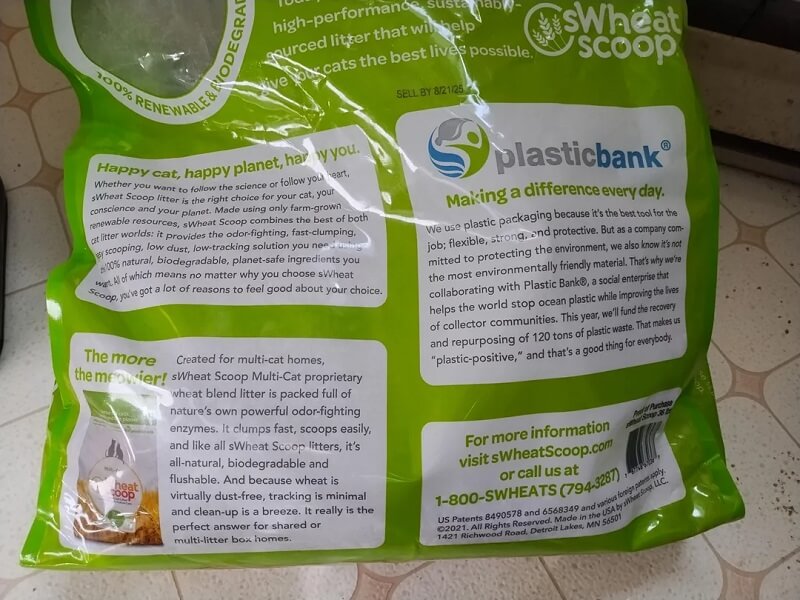Cat litter brand sWheatScoop is facing criticism online for switching from paper to plastic packaging despite claims of environmental commitment.
What's happening?
A Reddit user recently called out sWheatScoop for alleged greenwashing after noticing the brand had switched from paper bags to plastic packaging.

The new plastic bags feature messaging about the company's partnership with Plastic Bank, an organization that works to reduce ocean plastic pollution.
The packaging states that sWheatScoop will fund the recovery of 120 tons of plastic waste this year, claiming this makes them "plastic-positive." However, this move has sparked debate online about the effectiveness of such initiatives compared to reducing plastic use altogether.
"I even sent [sWheatScoop] an email complaining about it and they just doubled down on the BS in their reply," one eco-conscious Redditor commented. "I literally switched to this litter back in the day because it was non-clay litter that came in paper."
Why is the switch to plastic packaging concerning?
The shift from paper to plastic packaging is worrying because it potentially increases the amount of plastic waste entering the environment.
While paper bags are biodegradable and often made from recycled materials, plastic bags can persist in the environment for hundreds of years, contributing to pollution and harming wildlife.
This change also highlights the broader issue of companies using offsetting programs to justify continued plastic use rather than focusing on reduction and alternative materials. Such practices may give consumers a false sense of environmental responsibility while not addressing the root problem of plastic overproduction.
Is sWheatScoop doing anything about this?
Representatives for sWheatScoop did not respond to The Cool Down's email request for comment on the switch to plastic packaging.
The company touting being "plastic-positive" suggests it's recovering more plastic than it produces.
While this effort shows some environmental awareness, it's important to note that preventing plastic from entering the waste stream is generally more effective than recovering it afterward. The company argues that plastic packaging is "the best tool for the job," citing its flexibility, strength, and protective qualities.
However, their previous use of paper packaging suggests that alternatives are viable for their product. It's unclear why the switch was made or whether the company has explored other sustainable packaging options.
What's being done about plastic packaging more broadly?
Many other companies are taking steps to reduce their reliance on plastic packaging by:
• Exploring alternative materials: Some brands are using biodegradable or compostable packaging made from materials like cornstarch or seaweed.
• Implementing refill systems: Retailers are offering refill stations for products like detergents and personal care items, reducing the need for new packaging.
• Improving recyclability: Companies are redesigning packaging to be more easily recyclable and using more recycled content in their products.
• Advocating for legislative action: Some governments are introducing laws to reduce single-use plastics and improve recycling infrastructure.
As individual consumers, we can help reduce plastic demand by choosing products with minimal or sustainable packaging, supporting brands that prioritize plastic reduction over offsetting, properly recycling plastic waste and participating in local recycling programs, and using reusable alternatives to single-use plastic products.
By making informed choices and supporting truly sustainable practices, we can all contribute to reducing plastic waste and building a cleaner future.
Join our free newsletter for cool news and actionable info that makes it easy to help yourself while helping the planet.









